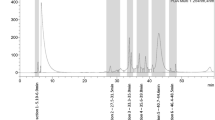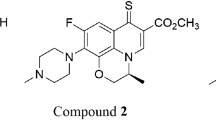Abstract
Clinical use of cyclophosphamide (CP) causes apoptosis-induced cell death in the immune system, liver, heart and kidneys. To prevent the cells against side effects of CP and its metabolites, increasing antioxidant defence mechanism of the body with supplemental antioxidants is important. Therefore, there is a requirement for effective agents which could prevent the healthy cells from the harmful effects of drug-induced toxicities. Several antioxidants have been used in protecting or alleviating CP-induced cell death. However, no such study is reported in CP-induced SH-SY5Y cell toxicity. The aim of this study was to evaluate likelihood ameliorative effects of caffeic acid, chrysin, quercetin and ferulic acid against CP-induced toxicity in SH-SY5Y neuron cells. In this study protective effects of quercetin, chrysin, caffeic acid and ferulic acid against CP-induced cell toxicity in SH-SY5Y cells was evaluated by cell proliferation assay, lipid peroxidation (LPO) analysis to decipher antioxidant capacity, tunel assay and qRT-PCR experiments to examine anti-apoptotic activities of the antioxidants. The results showed that CP-induced cell toxicity in SH-SY5Y cells and treatments with the antioxidants suppressed the cell death. Our results suggests that these anti-oxidants protected SH-SY5Y cells via a decrease in LPO levels, downregulating the expression of Cas-3, Cyt c and Bax and upregulating expression of anti-apoptotic gene Bcl-2. The use of antioxidant as nutritional supplements, and in particular of caffeic acid, chrysin, quercetin and ferulic acid, reduce apoptotic effects of CP in SH-SY5Y cells that could add insight into therapeutic approaches to CP-induced cell injuries.




Similar content being viewed by others
References
Benzer F, Kandemir FM, Ozkaraca M, Kucukler S, Caglayan C (2018) Curcumin ameliorates doxorubicin-induced cardiotoxicity by abrogation of inflammation, apoptosis, oxidative DNA damage, and protein oxidation in rats. J Biochem Mol Toxicol 32:e22030
Pushpavalli G, Kalaiarasi P, Veeramani C, Pugalendi KV (2010) Effect of chrysin on hepatoprotective and antioxidant status in d-galactosamine-induced hepatitis in rats. Eur J Pharmacol 631:36–41
Chen JH, Ho C-T (1997) Antioxidant activities of caffeic acid and its related hydroxycinnamic acid compounds. J Agric Food Chem 45:2374–2378
Gülçin İ (2006) Antioxidant activity of caffeic acid (3,4-dihydroxycinnamic acid). Toxicology 217:213–220
Graf E (1992) Antioxidant potential of ferulic acid. Free Radic Biol Med 13:435–448
David AVA, Arulmoli R, Parasuraman S (2016) Overviews of biological importance of quercetin: a bioactive flavonoid. Pharmacogn Rev 10:84
Glazer RI (2019) Developments in cancer chemotherapy, vol 2. CRC Press, Boca Raton
Zahler S, Ghazi NG, Singh AD (2019) Principles and complications of chemotherapy. Clinical ophthalmic oncology. Springer, Cham, pp 129–42
Norwood Toro LE, Hader SN, Kong A, Rui H, Beyer AM (2019) Adverse effects of chemotherapy on human microvascular function. FASEB J 33:453–453
Lamarca A et al (2019) ABC-06| A randomised phase III, multi-centre, open-label study of active symptom control (ASC) alone or ASC with oxaliplatin/5-FU chemotherapy (ASC+mFOLFOX) for patients (pts) with locally advanced/metastatic biliary tract cancers (ABC) previously-treated with cisplatin/gemcitabine (CisGem) chemotherapy. J Clin Oncol. https://doi.org/10.1200/JCO.2019.37.15_suppl.4003
Naidu MUR, Ramana GV, Rani PU, Suman A, Roy P (2004) Chemotherapy-induced and/or radiation therapy-induced oral mucositis-complicating the treatment of cancer. Neoplasia 6:423–431
Fraiser LH, Kanekal S, Kehrer JP (1991) Cyclophosphamide toxicity. Drugs 42:781–795
Tuchman SA et al (2017) Phase II study of dose-attenuated bortezomib, cyclophosphamide and dexamethasone (“VCD-Lite”) in very old or otherwise toxicity-vulnerable adults with newly diagnosed multiple myeloma. J Geriatr Oncol 8:165–169
Khorwal G, Chauhan R, Nagar M (2017) Effect of cyclophosphamide on liver in albino rats: a comparative dose dependent histomorphological study. Int J Adv Biol Biomed Res 8:102–107
Groeger G, Quiney C, Cotter TG (2009) Hydrogen peroxide as a cell-survival signaling molecule. Antioxid Redox Signal 11:2655–2671
Focaccetti C et al (2015) Effects of 5-fluorouracil on morphology, cell cycle, proliferation, apoptosis, autophagy and ROS production in endothelial cells and cardiomyocytes. PLoS ONE 10:e0115686
Li X, Jankovic J, Le W (2011) Iron chelation and neuroprotection in neurodegenerative diseases. J Neural Transm 118:473–477
Goudarzi M et al (2017) Pretreatment with melatonin protects against cyclophosphamide-induced oxidative stress and renal damage in mice. Fundam Clin Pharmacol 31:625–635
Zhai X et al (2018) Protective effect of ALDH2 against cyclophosphamide-induced acute hepatotoxicity via attenuating oxidative stress and reactive aldehydes. Biochem Biophys Res Commun 499:93–98
Caglayan C, Temel Y, Kandemir FM, Yildirim S, Kucukler S (2018) Naringin protects against cyclophosphamide-induced hepatotoxicity and nephrotoxicity through modulation of oxidative stress, inflammation, apoptosis, autophagy, and DNA damage. Environ Sci Pollut Res 25:20968–20984
Iqubal A et al (2019) Nerolidol ameliorates cyclophosphamide-induced oxidative stress, neuroinflammation and cognitive dysfunction: plausible role of Nrf2 and NF-κB. Life Sci 236:116867
Lee SI, Kang KS (2019) Omega-3 fatty acids modulate cyclophosphamide induced markers of immunosuppression and oxidative stress in pigs. Sci Rep 9:1–8
Salimi A, Pirhadi R, Jamali Z, Ramazani M, Yousefsani BS, Pourahmad J (2019) Mitochondrial and lysosomal protective agents ameliorate cytotoxicity and oxidative stress induced by cyclophosphamide and methotrexate in human blood lymphocytes. Hum Exp Toxicol 38:1266–1274
Li B et al (2020) Selenium-alleviated hepatocyte necrosis and DNA damage in cyclophosphamide-treated geese by mitigating oxidative stress. Biol Trace Elem Res 193:508–516
Su L-J, Zhang J-H et al (2019) Reactive oxygen species-induced lipid peroxidation in apoptosis, autophagy, and ferroptosis. Oxid Med Cell Longev. https://doi.org/10.1155/2019/5080843
Robertson GS, Crocker SJ, Nicholson DW, Schulz JB (2008) Neuroprotection by the inhibition of apoptosis. Brain Pathol 10:283–292
Pan T, Kondo S, Zhu W, Xie W, Jankovic J, Le W (2008) Neuroprotection of rapamycin in lactacystin-induced neurodegeneration via autophagy enhancement. Neurobiol Dis 32:16–25
De Lazzari F, Bubacco L, Whitworth AJ, Bisaglia M (2018) Superoxide radical dismutation as new therapeutic strategy in Parkinson’s disease. Aging Dis 9:716
Ashkenazi A (2008) Directing cancer cells to self-destruct with pro-apoptotic receptor agonists. Nat Rev Drug Discov 7:1001–1012
Ashkenazi A, Fairbrother WJ, Leverson JD, Souers AJ (2017) From basic apoptosis discoveries to advanced selective BCL-2 family inhibitors. Nat Rev Drug Discov 16:273–284
Darendelioglu E, Aykutoglu G, Tartik M, Baydas G (2016) Turkish propolis protects human endothelial cells in vitro from homocysteine-induced apoptosis. Acta Histochem 118:369–376
Tartik M, Darendelioglu E, Aykutoglu G, Baydas G (2016) Turkish propolis supresses MCF-7 cell death induced by homocysteine. Biomed Pharmacother 82:704–712
Aykutoglu G, Tartik M, Darendelioglu E, Ayna A, Baydas G (2020) Melatonin and vitamin E alleviate homocysteine-induced oxidative injury and apoptosis in endothelial cells. Mol Biol Rep 47:5285–5293
Ayna A (2020) Apoptotic effects of beta-carotene, alpha-tocopherol and ascorbic acid on PC-3 prostate cancer cells. Hacettepe J Biol Chem 48:211–218
Jiang W et al (2017) Magnesium isoglycyrrhizinate shows hepatoprotective effects in a cyclophosphamide-induced model of hepatic injury. Oncotarget 8:33252
Caglayan C (2019) The effects of naringin on different cyclophosphamide-induced organ toxicities in rats: investigation of changes in some metabolic enzyme activities. Environ Sci Pollut Res 26:26664–26673
ALHaithloul HAS, Alotaibi MF, Bin-Jumah M, Elgebaly H, Mahmoud AM (2019) Olea europaea leaf extract up-regulates Nrf2/ARE/HO-1 signaling and attenuates cyclophosphamide-induced oxidative stress, inflammation and apoptosis in rat kidney. Biomed Pharmacother 111:676–685
Fouad AA, Abdel-Gaber SA, Abdelghany MI (2019) Hesperidin opposes the negative impact of cyclophosphamide on mice kidneys. Drug Chem Toxicol 2019:1–6
Senthilkumar S, Devaki T, Manohar BM, Babu MS (2006) Effect of squalene on cyclophosphamide-induced toxicity. Clin Chim Acta 364:335–342
Rehman MU et al (2012) Cyclophosphamide-induced nephrotoxicity, genotoxicity, and damage in kidney genomic DNA of Swiss albino mice: the protective effect of Ellagic acid. Mol Cell Biochem 365:119–127
Song J, Liu L, Li L, Liu J, Song E, Song Y (2014) Protective effects of lipoic acid and mesna on cyclophosphamide-induced haemorrhagic cystitis in mice. Cell Biochem Funct 32:125–132
Kocahan S, Dogan Z, Erdemli E, Taskin E (2017) Protective effect of quercetin against oxidative stress-induced toxicity associated with doxorubicin and cyclophosphamide in rat kidney and liver tissue. Iran J Kidney Dis 11:124
Zwolak I (2020) Protective effects of dietary antioxidants against vanadium-induced toxicity: a review. Oxid Med Cell Longev. https://doi.org/10.1155/2020/1490316
Özbolat SN, Ayna A (2020) Chrysin suppresses HT-29 cell death induced by diclofenac through apoptosis and oxidative damage. Nutr Cancer. https://doi.org/10.1080/01635581.2020.1801775
Darendelioglu E (2020) Neuroprotective effects of chrysin on diclofenac-induced apoptosis in SH-SY5Y cells. Neurochem Res 45:1064–1071
Zhang J, Melton LD, Adaim A, Skinner MA (2008) Cytoprotective effects of polyphenolics on H2O2-induced cell death in SH-SY5Y cells in relation to their antioxidant activities. Eur Food Res Technol 228:123–131
Izuta H, Shimazawa M, Tazawa S, Araki Y, Mishima S, Hara H (2008) Protective effects of Chinese propolis and its component, chrysin, against neuronal cell death via inhibition of mitochondrial apoptosis pathway in SH-SY5Y cells. J Agric Food Chem 56:8944–8953
Pakrashi S, Chakraborty J, Bandyopadhyay J (2020) Neuroprotective role of quercetin on rotenone-induced toxicity in SH-SY5Y cell line through modulation of apoptotic and autophagic pathways. Neurochem Res 45:1962–1973
Janbaz KH, Saeed SA, Gilani AH (2004) Studies on the protective effects of caffeic acid and quercetin on chemical-induced hepatotoxicity in rodents. Phytomedicine 11:424–430
Olayinka ET, Ore A, Ola OS, Adeyemo OA (2015) Ameliorative effect of gallic acid on cyclophosphamide-induced oxidative injury and hepatic dysfunction in rats. Med Sci 3:78–92
Kawanishi M, Matsuda T, Nakayama A, Takebe H, Matsui S, Yagi T (1998) Molecular analysis of mutations induced by acrolein in human fibroblast cells using supF shuttle vector plasmids. Mutat Res 417:65–73
Gunes S, Sahinturk V, Uslu S, Ayhanci A, Kacar S, Uyar R (2018) Protective effects of selenium on cyclophosphamide-induced oxidative stress and kidney injury. Biol Trace Elem Res 185:116–123
Abotaleb M et al (2019) Flavonoids in cancer and apoptosis. Cancers 11:28
Acknowledgements
The authors of this study expresses their gratitude to the directorate of Central Research Laboratory of the Bingol University for allowing us to use their laboratory facilities.
Author information
Authors and Affiliations
Corresponding author
Ethics declarations
Conflict of interest
The authors declare that there are no conflicts of interest.
Ethical approval
The authors are committed to compliance with ethical standards.
Additional information
Publisher’s Note
Springer Nature remains neutral with regard to jurisdictional claims in published maps and institutional affiliations.
Electronic supplementary material
Below is the link to the electronic supplementary material.
Rights and permissions
About this article
Cite this article
Ayna, A., Özbolat, S.N. & Darendelioglu, E. Quercetin, chrysin, caffeic acid and ferulic acid ameliorate cyclophosphamide-induced toxicities in SH-SY5Y cells. Mol Biol Rep 47, 8535–8543 (2020). https://doi.org/10.1007/s11033-020-05896-4
Received:
Accepted:
Published:
Issue Date:
DOI: https://doi.org/10.1007/s11033-020-05896-4




